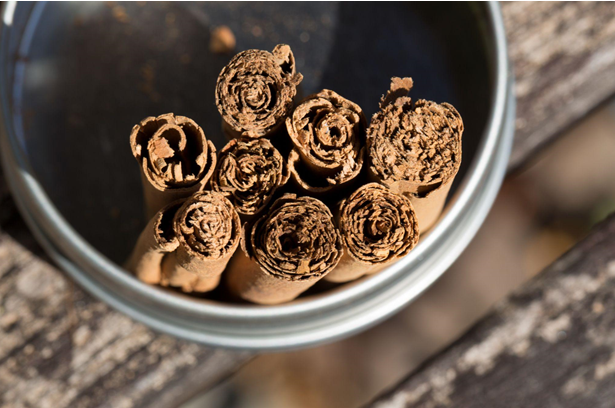Aging a cigar is not just storage. It is an act of restraint in a world that celebrates instant gratification. A cigar that sits untouched for months or even years does not simply wait. It transforms. The oils distribute more evenly. The harshness softens. The draw becomes smoother, and the smoke takes on a layered complexity.
Without the right environment, however, time becomes destructive. Dry air cracks the wrapper. Too much moisture invites mold. The line between perfection and ruin is thin, and humidity is the quiet arbiter.
Table of Contents
Why Moisture Is the Unseen Ingredient
Tobacco is organic, alive in its own way. Even after curing and rolling, it responds to the environment around it. Humidity is not an accessory to the cigar ritual. It is the ingredient that determines whether aging will enhance or erode.
Scientific consensus supports this: according to the National Library of Medicine, plant-based materials remain chemically active long after harvest, shifting in response to moisture and temperature levels. What feels like a lifeless leaf is in fact a responsive system that breathes with the room it sits in.
Learning From Old-World Practices
Long before digital hygrometers, cigar makers in Cuba and the Dominican Republic relied on instinct and climate. The natural humidity of the Caribbean created conditions close to ideal: stable warmth, balanced moisture, and circulation from the sea. Cigars aged in those environments developed reputations for consistency and depth.
Transplant that tradition into a Canadian winter and the story changes. Forced air heating strips indoor spaces of moisture. Tobacco becomes brittle, flavor dissipates, and the cultural ritual falters. Aging cigars in northern climates means adapting the old-world knowledge to modern control systems.
The Canadian Climate Problem
Canada is a country of extremes. Summers are hot, humid, and short. Winters are long, dry, and punishing. Relative humidity indoors can plummet below 20 percent in January, far below the recommended 65 to 72 percent for aging cigars. Health Canada notes that even human respiratory systems are strained under such conditions, leading to dry airways and increased illness. If the body struggles, delicate tobacco leaves stand no chance. For collectors and enthusiasts, climate is not a backdrop but the primary challenge to overcome.
What Happens Inside the Leaf
When moisture is stable, oils and sugars within the tobacco leaf redistribute evenly. This creates balance. When it is unstable, flavors spike or fade unpredictably. High humidity triggers mold growth. Low humidity fractures the wrapper, and with it, the integrity of the smoke. Aged cigars lose their intended character when these conditions fluctuate. Studies on agricultural preservation by the Food and Agriculture Organization (FAO) confirm this: controlled humidity directly extends the usable life and quality of plant-based goods. The same science applies here.
Modern Tools That Change the Ritual
What was once left to guesswork now has solutions rooted in precision. Digital hygrometers measure down to a single percentage point. Humidors are built with Spanish cedar that regulates and releases moisture as needed.
And single-use solutions like Boveda humidity control packs remove the anxiety of fluctuation. They maintain a constant relative humidity, adapting to dry or damp conditions automatically. For collectors, this is not just convenience. It is the difference between investing in aging and gambling with uncertainty.
Aging as a Discipline
To age cigars is to accept that results come slowly. The science of humidity makes it possible, but the discipline comes from the smoker. It requires patience in months where the urge to light up early is strong. It requires consistency, checking levels, adjusting when necessary, and resisting shortcuts. The reward is not simply a smoother smoke. It is the layered understanding that good things are shaped by invisible forces we choose to respect or ignore.
Cigar Aging and Wine Cellars
The parallels to wine are obvious. Wine requires stable temperatures and controlled humidity to age into its full potential. Vineyards in Niagara and British Columbia have mastered these systems, producing bottles that compete globally. The same principle applies to tobacco. Both are agricultural products that improve when nurtured under controlled conditions. Both lose character when ignored. This crossover is not accidental. It is the shared science of preservation that links rituals across cultures and climates.
Why Collectors Talk About Control, Not Luck
Luck might explain one perfect cigar. Control explains a collection. Ask any seasoned collector and the language shifts quickly from flavor notes to data points. How long was the cigar aged? At what humidity? Under what temperature? These details determine the final experience. A journal of humidity levels is as important as the humidor itself. It creates accountability, a record that proves patience was not wasted. For enthusiasts in climates like Canada, control is not a hobby. It is survival.
The Subtle Power of Ritual
Lighting a cigar that has aged well is different. The flavor is more rounded. The smoke lingers in a way that feels deliberate. The ritual gains weight because it reflects years of quiet choices. Humidity control is not glamorous. It does not create dramatic moments or cinematic flair. It is the background discipline that allows the foreground ritual to exist at all.
The lesson extends beyond cigars. Preservation in any form (whether it is aging whiskey, storing coffee, or protecting cannabis) is about creating space for time to do its work without interference.
The Lesson Beyond Tobacco
What humidity control teaches us about aging fine cigars is not just about tobacco. It is about respect for process. It is about resisting the quick fix and investing in conditions that let complexity emerge. The same principles apply to other practices: art conservation, seed storage, even the way we maintain food security in volatile climates. The discipline of control is universal. In cigars, it happens to taste like earth, cedar, cocoa, or spice. In other arenas, it may manifest as resilience, survival, or cultural preservation. The language changes, but the science holds.

